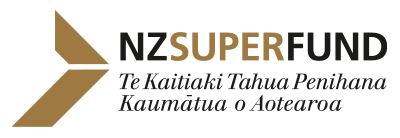Strategic tilting
Strategic tilting is one of our active strategies designed to add value to the Fund by enhancing long-term returns. Our approach is contrarian: we buy when others are selling and sell when others are buying, based on our assessment of the 'fair value' of assets. This helps us improve the Fund’s risk-adjusted returns over long horizons.
Benefits of strategic tilting
Strategic tilting aligns with our core investment beliefs and investment advantages:
-
Mean reversion: We believe that over the long run, markets provide returns that match their risks. This allows us to identify the fundamental value of each market and determine the attractiveness of different asset classes and currencies. Our strategy is based on the belief that asset class returns are partly predictable and prices tend to revert to a fair value over time.
-
Long investment horizon: Our long-term investment horizon allows us to weather short-term market volatility. With consistent long-term beliefs and a strong understanding of what to expect through market cycles, we can maximise returns in the long run, even if we face short-term losses.
-
Independent governance and risk management: We operate within risk limits set by our Board, with regular oversight by the Investment Committee. Our operational independence allows us to make purely commercial investment decisions and adjust our asset allocation to suit the Fund’s long-term goals. For example, during the Global Financial Crisis, our long-term horizon enabled us to buy cheaper equities and sell them later at higher prices.
How we manage strategic tilting
Our strategic tilting is managed internally by our Strategic Tilting team using expertise from the Asset Allocation, Economics, Portfolio Completion, and Investments teams. Decisions are based on how current prices compare with our internal estimates of fair value, considering long-term fundamental and economic factors. The size of our tilt positions depends on the deviation from fair value, the risk and our confidence in tilting that asset.
Our Investment Committee oversees the tilting programme, ensuring positions are taken based on expected long-term returns, adjusted for risk and confidence. The Board regularly reviews the range of asset classes we can tilt across, and maximum position sizes.
Performance
Since its inception in 2009, our strategic tilting strategy has performed well in terms of both risk and return. As of 30 June 2024, the strategy has added approximately NZ$4.5 billion in value to the Fund.
